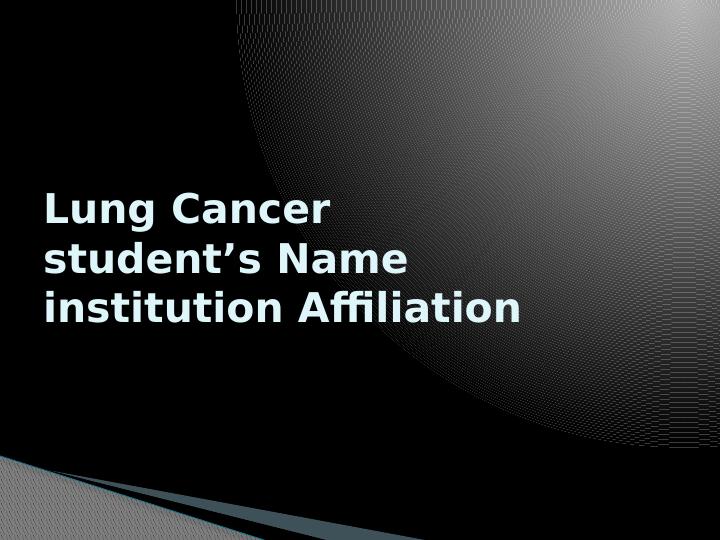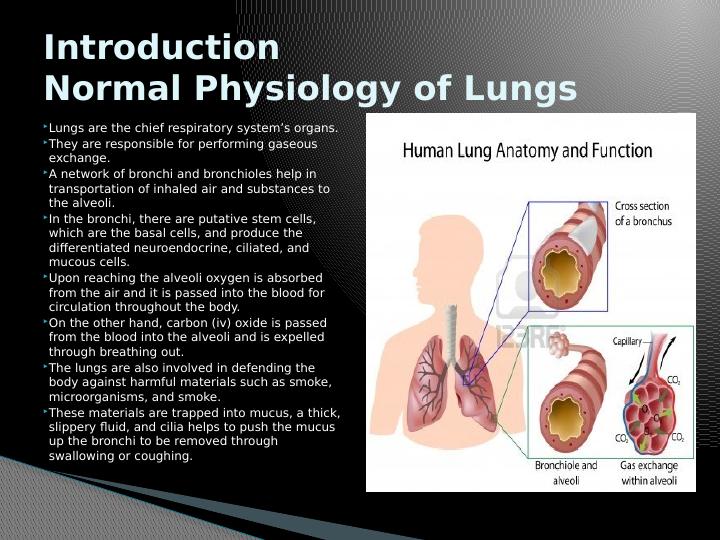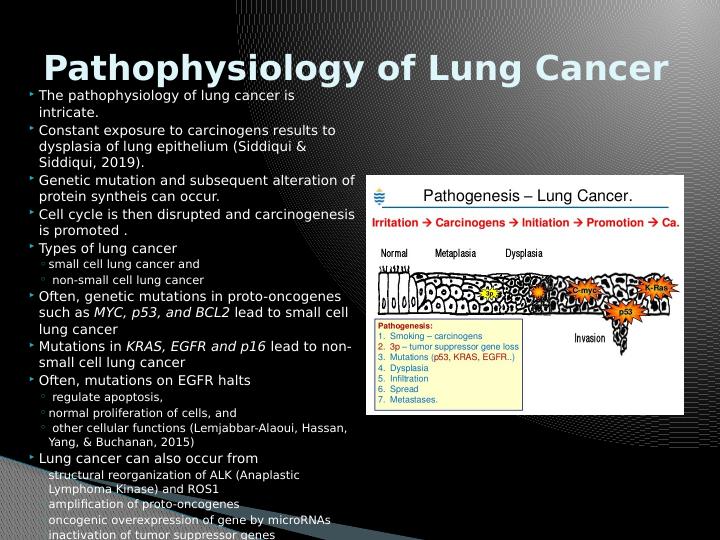Lung Cancer: Pathophysiology, Treatment with Cisplatin, and Adverse Effects
To produce an informative video that examines the pathophysiology of a specific disease or condition and presents the pharmacology used to address this.
9 Pages1243 Words44 Views
Added on 2023-01-17
About This Document
This presentation provides an overview of the pathophysiology of lung cancer, focusing on the dysplasia of lung epithelium and genetic mutations. It also discusses the pharmacology of treatment with cisplatin, including its mechanism of action and the formation of DNA adducts. Additionally, the adverse effects of cisplatin, such as renal toxicity and cardiotoxicity, are explored. The presentation concludes with the relevance of exercise in lung cancer management.
Lung Cancer: Pathophysiology, Treatment with Cisplatin, and Adverse Effects
To produce an informative video that examines the pathophysiology of a specific disease or condition and presents the pharmacology used to address this.
Added on 2023-01-17
ShareRelated Documents
End of preview
Want to access all the pages? Upload your documents or become a member.
Understanding Cancer: Biology, Genetics, Types and Colon Cancer Cell Lines
|29
|8389
|113
Breast Cancer Assignment 2022
|7
|1676
|15
10 Discoveries in the War on Cancer - BIOL 101 Individual Assignment 3
|6
|1879
|339
Causes and Treatment of Cancer - Desklib
|9
|708
|317



